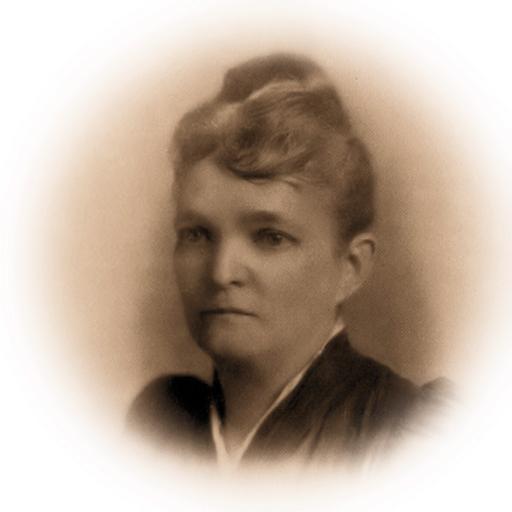MAKE A MEME
View Large Image

| View Original: | Dora_Richards_Miller.jpg (759x759) | |||
| Download: | Original | Medium | Small | Thumb |
| Courtesy of: | www.flickr.com | More Like This | ||
| Keywords: portrait people indoor monochrome white background Dora Richards Miller author and educator, was born in the Island of St. Thomas, Danish West Indies. Her father, Richard Richards, was from Liverpool, Eng., and her mother’s family also was of English descent, through Hezekiah Huntington, of Connecticut. He was her grandfather and belonged to the same family from which came Samuel Huntington, signer of the Declaration of Independence. The death of her father while she was yet an infant caused her to be taken to the home of her Huntington grandmother, in the neighboring island of Santa Cruz. Hurricanes and earthquakes were among her experiences there, and not long before she left the island a negro insurrection took place, which resulted in the emancipation of the slaves in all the Danish Islands. Her mother, with the other children, had removed to New Orleans, La., but it was not until after her mother’s death, when she was about fourteen, she joined there her unknown brothers and sisters, to reside in the family of a married sister. She was graduated with distinction, her school-girl essays having for several years attracted attention, and the editors of a New Orleans paper invited her to contribute to their journal. She had prepared herself for the profession of a teacher and undertaken the support and education of a young brother, and thought it best to give all her powers to that work. A few years later, when that and other duties were accomplished, she became the wife, in 1862, of Anderson Miller, a lawyer from Mississippi, and they went to Arkansas to reside. Troubles resulting from the war caused a break-up in those journeyings in the Confederacy, culminating in the siege of Vicksburg, which are recounted in her articles published in the “Century,” entitled “Diary of a Union Woman in the Siege of Vicksburg” and “Diary of a Union Woman in the South.” Her husband died soon after the close of the war, New Orleans. During those busy years she was using her pen in the local papers, without name, on school subjects. In 1886 her “War Diary” was published in the “Century.” Those articles attracted great attention. In 1889 she wrote, in collaboration with George W. Cable, “The Haunted House on Royal Street,” being science teacher in the high school held in that building when it was invaded by the White League. She was correspondent for the Austin, Tex., “Statesman” during the second Cotton Exposition. She was assistant editor of a paper published in Houston, Tex., and has written for “Lippincott’s Magazine,” the “Louisiana Journal of Education,” the “Practical Housekeeper” and other journals. A Woman of the Century, with 1,470 biographical sketches and published in 1893 Dora Richards Miller author and educator, was born in the Island of St. Thomas, Danish West Indies. Her father, Richard Richards, was from Liverpool, Eng., and her mother’s family also was of English descent, through Hezekiah Huntington, of Connecticut. He was her grandfather and belonged to the same family from which came Samuel Huntington, signer of the Declaration of Independence. The death of her father while she was yet an infant caused her to be taken to the home of her Huntington grandmother, in the neighboring island of Santa Cruz. Hurricanes and earthquakes were among her experiences there, and not long before she left the island a negro insurrection took place, which resulted in the emancipation of the slaves in all the Danish Islands. Her mother, with the other children, had removed to New Orleans, La., but it was not until after her mother’s death, when she was about fourteen, she joined there her unknown brothers and sisters, to reside in the family of a married sister. She was graduated with distinction, her school-girl essays having for several years attracted attention, and the editors of a New Orleans paper invited her to contribute to their journal. She had prepared herself for the profession of a teacher and undertaken the support and education of a young brother, and thought it best to give all her powers to that work. A few years later, when that and other duties were accomplished, she became the wife, in 1862, of Anderson Miller, a lawyer from Mississippi, and they went to Arkansas to reside. Troubles resulting from the war caused a break-up in those journeyings in the Confederacy, culminating in the siege of Vicksburg, which are recounted in her articles published in the “Century,” entitled “Diary of a Union Woman in the Siege of Vicksburg” and “Diary of a Union Woman in the South.” Her husband died soon after the close of the war, New Orleans. During those busy years she was using her pen in the local papers, without name, on school subjects. In 1886 her “War Diary” was published in the “Century.” Those articles attracted great attention. In 1889 she wrote, in collaboration with George W. Cable, “The Haunted House on Royal Street,” being science teacher in the high school held in that building when it was invaded by the White League. She was correspondent for the Austin, Tex., “Statesman” during the second Cotton Exposition. She was assistant editor of a paper published in Houston, Tex., and has written for “Lippincott’s Magazine,” the “Louisiana Journal of Education,” the “Practical Housekeeper” and other journals. A Woman of the Century, with 1,470 biographical sketches and published in 1893 | ||||